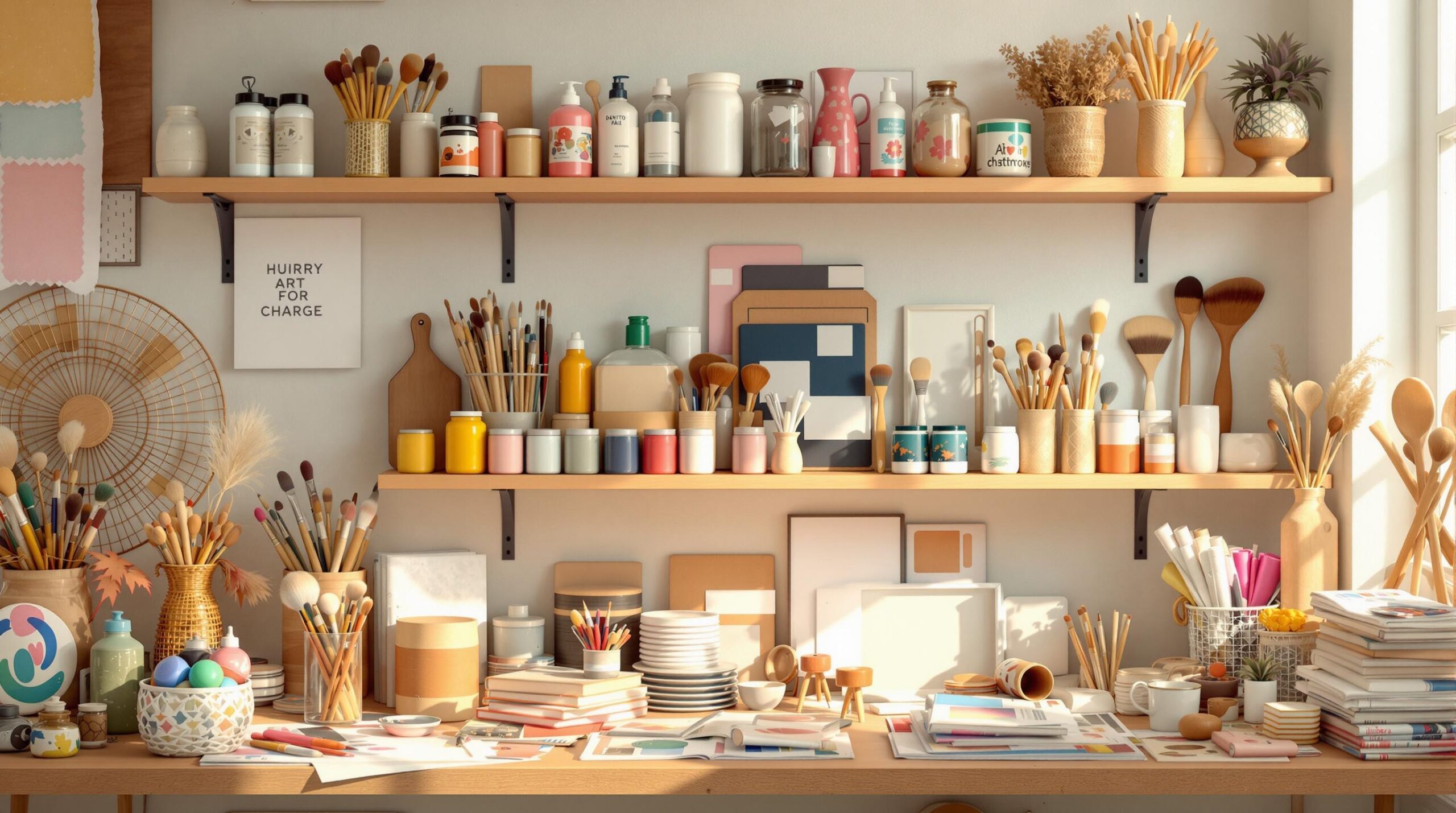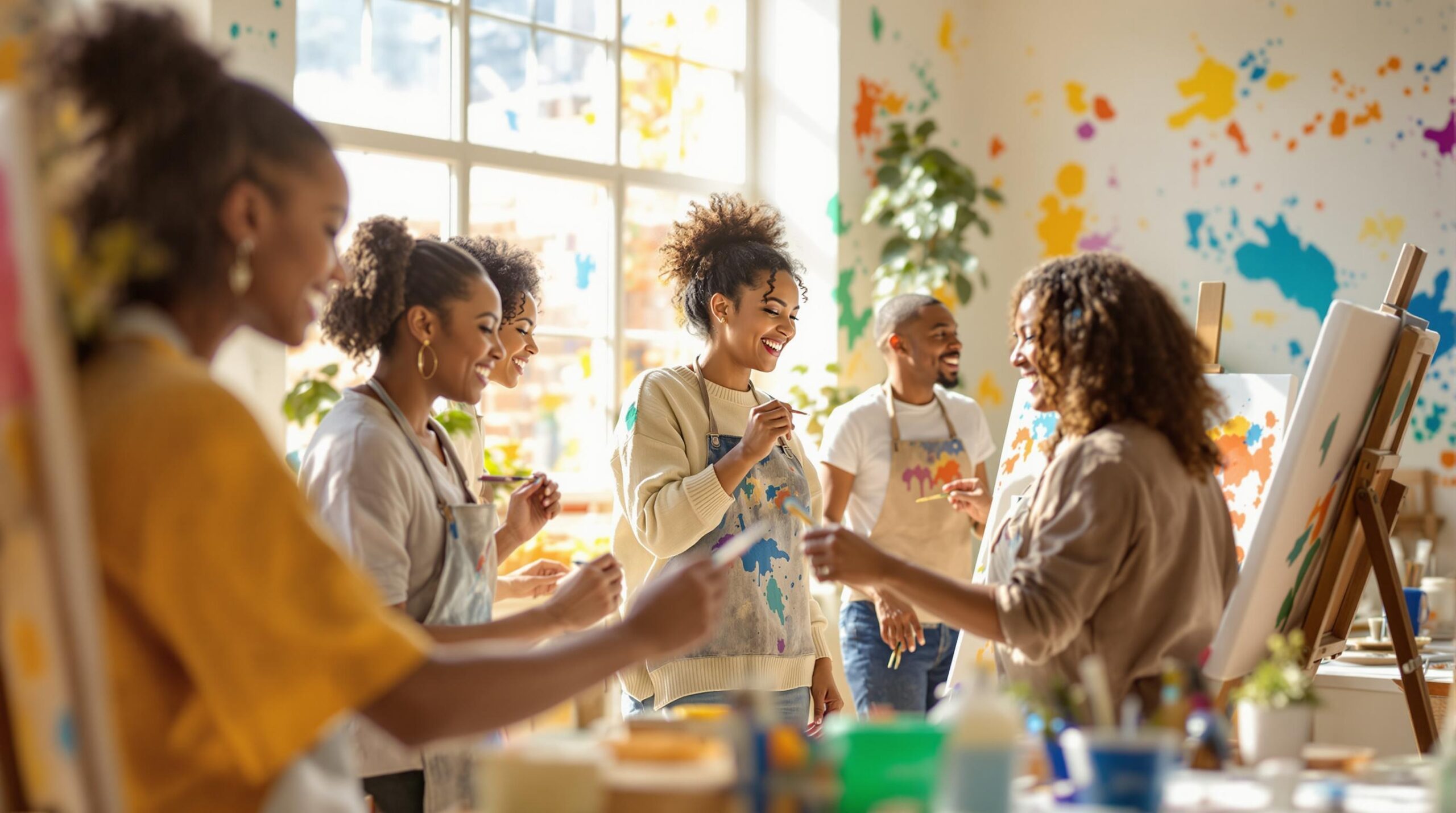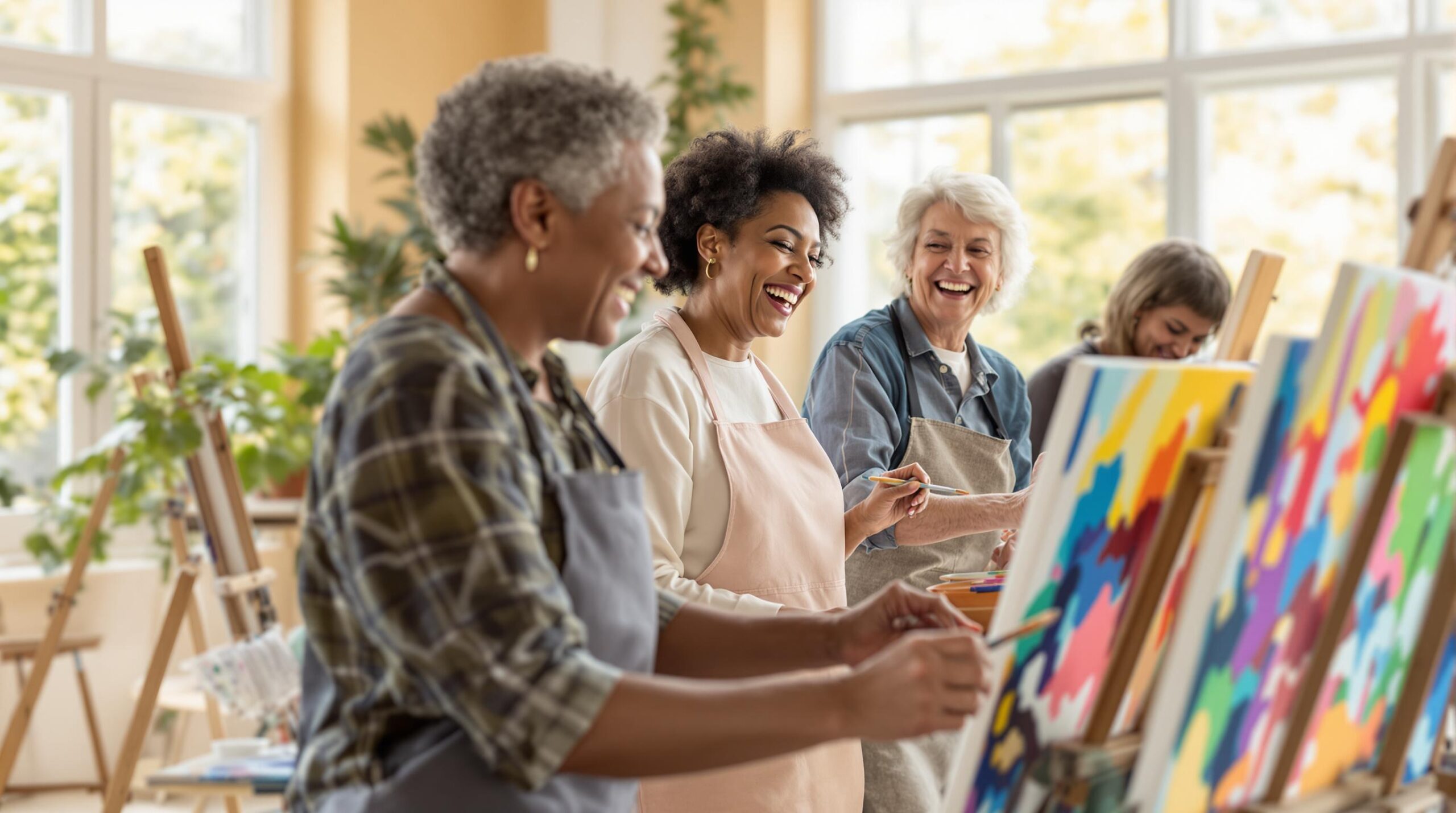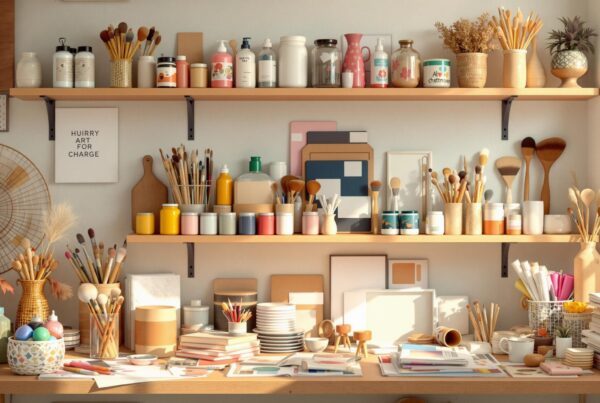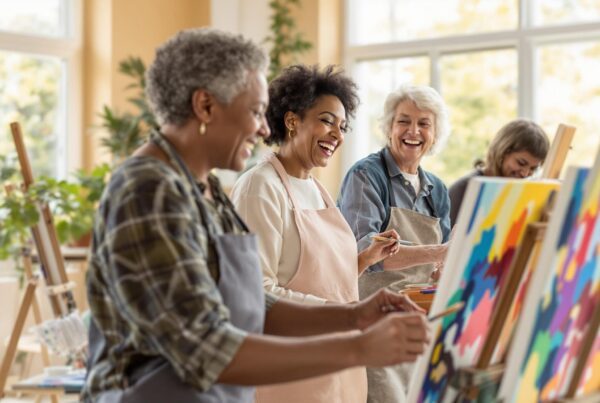🎨 Ready to turn that blank canvas into something spectacular? Buckle up, because we’re about to embark on an incredible artistic adventure that will revolutionise the way you think about painting! Whether you’re a complete newbie clutching your first brush or a seasoned artist looking for fresh inspiration, I’m about to share some game-changing ideas for painting that’ll make your creative spirit soar!
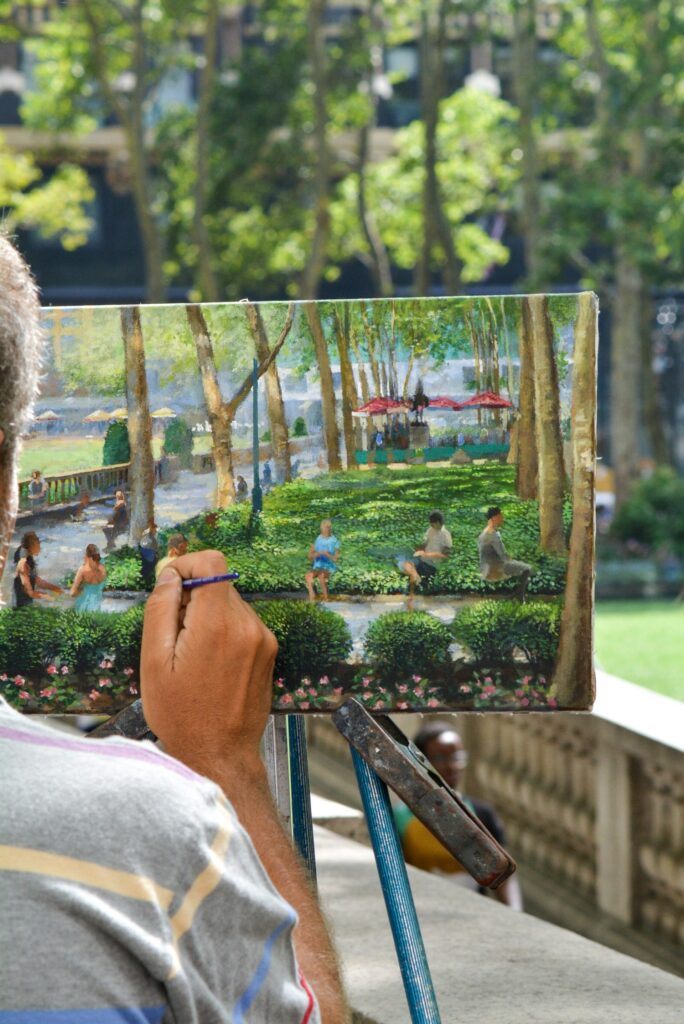
Listen, I get it – staring at an empty canvas can feel like facing Mount Everest with a toothpick. Trust me, I’ve been there! After 15+ years of painting (and yes, plenty of artistic disasters along the way 😅), I’ve discovered that the secret isn’t just about what you paint – it’s about unleashing your imagination in ways you never thought possible!
Picture this: You’re standing in your creative space, brush in hand, and instead of feeling that familiar knot of anxiety, you’re buzzing with excitement about the endless possibilities in front of you. Sounds amazing, right? Well, that’s exactly where we’re headed! I’m going to share every juicy tip, trick, and technique I’ve learned from my journey – including some happy accidents that turned into my best discoveries!
But here’s the thing – this isn’t just another boring “how-to” guide. We’re going to dive deep into the world of colour, texture, and imagination. We’ll explore everything from quick 30-minute projects that’ll boost your confidence (perfect for those “I need to create something NOW” moments) to mind-bending techniques that’ll have your friends asking, “How on earth did you do that?!”
And the best part? You don’t need a fancy art studio or expensive supplies to get started. In fact, I’ll share my favourite budget-friendly tools (hello, Amazon UK deals!) that deliver professional results without breaking the bank. Because let’s be real – spending a fortune on supplies before you’ve found your groove is just plain crazy!
So, if you’re hunting for fresh ideas for painting that’ll spark your creativity, you’re in exactly the right place! Grab your brushes, roll up your sleeves, and let’s dive into this colourful adventure together! Trust me, by the time you finish reading this guide, you’ll have so many ideas buzzing in your head, your biggest problem will be deciding which awesome project to tackle first! 🚀
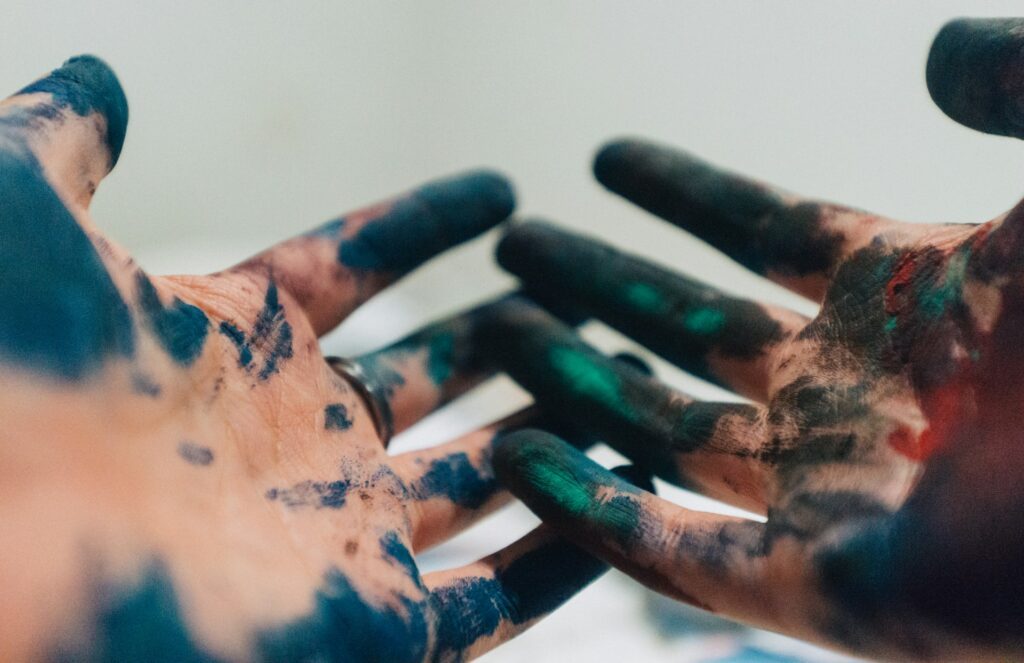
Getting Started: Essential Tools for Your Creative Journey
Before we explore exciting ideas for painting, let’s talk about some must-have tools that’ll make your painting journey more enjoyable. Understanding the difference between various types of paints and their effects is crucial. I’ve found these particularly reliable:
- Winsor & Newton Galeria Acrylic Paint Set (£24.99 on Amazon UK) – perfect for beginners and intermediate artists
- Royal & Langnickel Art Set (£39.99) – great all-in-one starter kit
- Daler Rowney Graduate Brushes (£12.99) – my personal favourites for texture work
What Type of Paint Should You Choose?
Choosing the right type of paint can feel like navigating a maze, but fear not! Each type of paint has its own unique charm and can bring different effects to your artwork. Here’s a quick guide to help you decide:
- Watercolour Paint: If you love delicate, ethereal effects, watercolour is your best friend. Its transparency and fluidity make it perfect for capturing the subtle beauty of nature. Imagine painting a soft, misty morning or the gentle flow of a river – that’s the magic of watercolours!
- Acrylic Paint: Fast-drying and incredibly versatile, acrylic paint is ideal for those who love bold, vibrant colors. Whether you’re working on a quick project or layering colors for a rich, textured finish, acrylics have got you covered. Plus, they’re super forgiving, making them perfect for beginners.
- Oil Paint: Known for its rich, vibrant colors and smooth blending capabilities, oil paint is the go-to for artists aiming for realistic, detailed artworks. It dries slowly, giving you plenty of time to perfect your masterpiece. Think of the classic, timeless beauty of a Rembrandt or a Van Gogh – that’s the power of oil paint.
- Gouache Paint: If you’re into bold, graphic artworks, gouache is your paint of choice. It’s opaque and matte, allowing you to create striking, vibrant pieces with ease. Perfect for illustrations and design work, gouache can bring a unique, professional finish to your art.
When choosing your paint, consider the surface you’ll be working on, the effect you want to achieve, and your personal preference for texture and consistency. Happy painting!
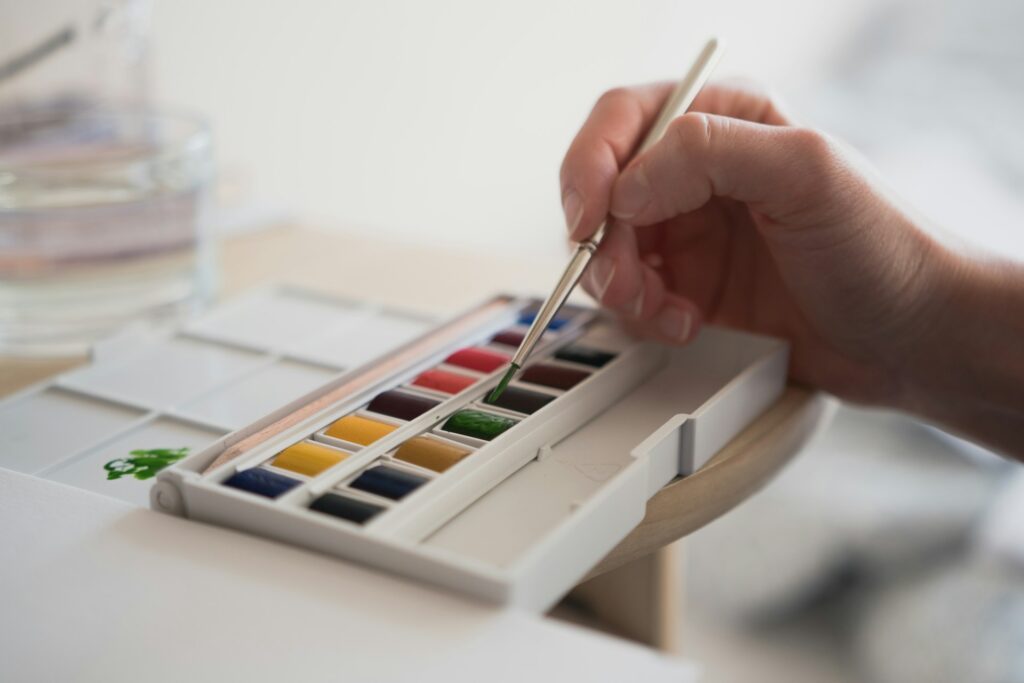
What Supplies Will You Need?
Gathering your painting supplies is like preparing for an exciting adventure! Here’s a checklist of essentials to get you started:
- Paint: Choose your preferred type – whether it’s watercolour, acrylic, oil, or gouache. Don’t forget to pick a colour palette that excites you!
- Brushes: A variety of natural or synthetic brushes in different sizes and shapes will help you achieve various effects. My personal favourites are the Daler Rowney Graduate Brushes – they’re perfect for texture work!
- Canvas or Paper: Depending on your paint choice, select a surface that suits your desired texture. For acrylics and oils, canvas is great. For watercolours, go for high-quality watercolour paper.
- Easel: An easel will keep your canvas at a comfortable height and angle, making your painting sessions more enjoyable.
- Palette: A palette is essential for mixing and organizing your colours. You can use a traditional wooden palette or even a disposable one for easy clean-up.
- Water Container: Keep a container of water handy to clean your brushes and thin your paint. For acrylics and watercolors, this is a must!
- Rags: Lint-free rags are perfect for wiping your brushes clean and removing excess paint. Trust me, they’re lifesavers!
With these supplies in hand, you’re all set to dive into your painting journey. Let the creativity flow!
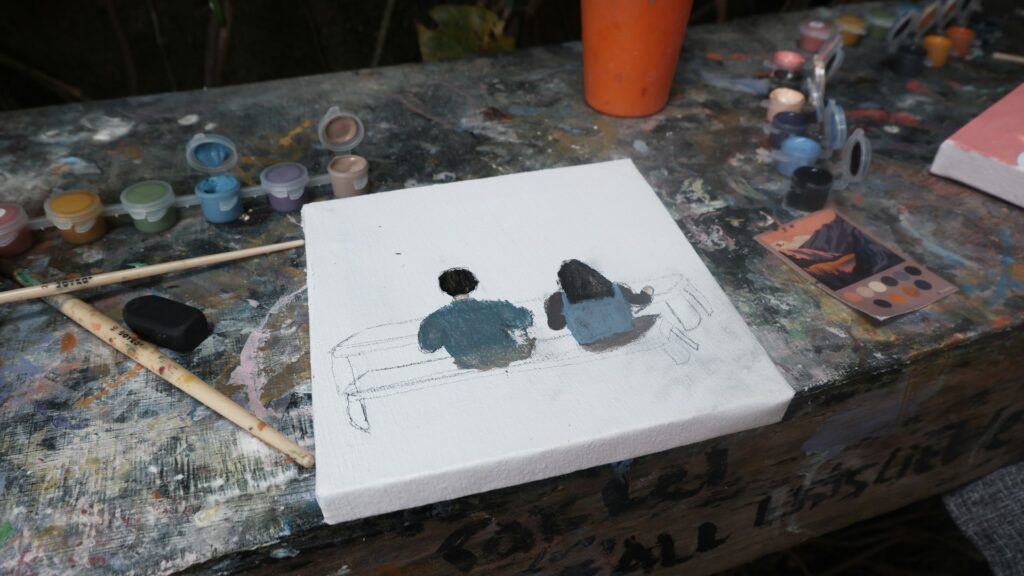
Finding Your Style: The First Steps
The journey of developing your painting style is deeply personal, and understanding the difference in artistic skills developed over time can be enlightening. Whether you’re drawn to modern abstract pieces or realistic landscapes, your unique perspective matters. Practicing drawing can significantly enhance your visual aesthetics and artistic skills, helping you refine your painting style over time. Start by asking yourself: what makes your heart skip a beat when you visit an art gallery?
Finding Inspiration for Your Painting
Finding inspiration for your painting can be a thrilling adventure in itself! Here are some tips to help you get those creative juices flowing:
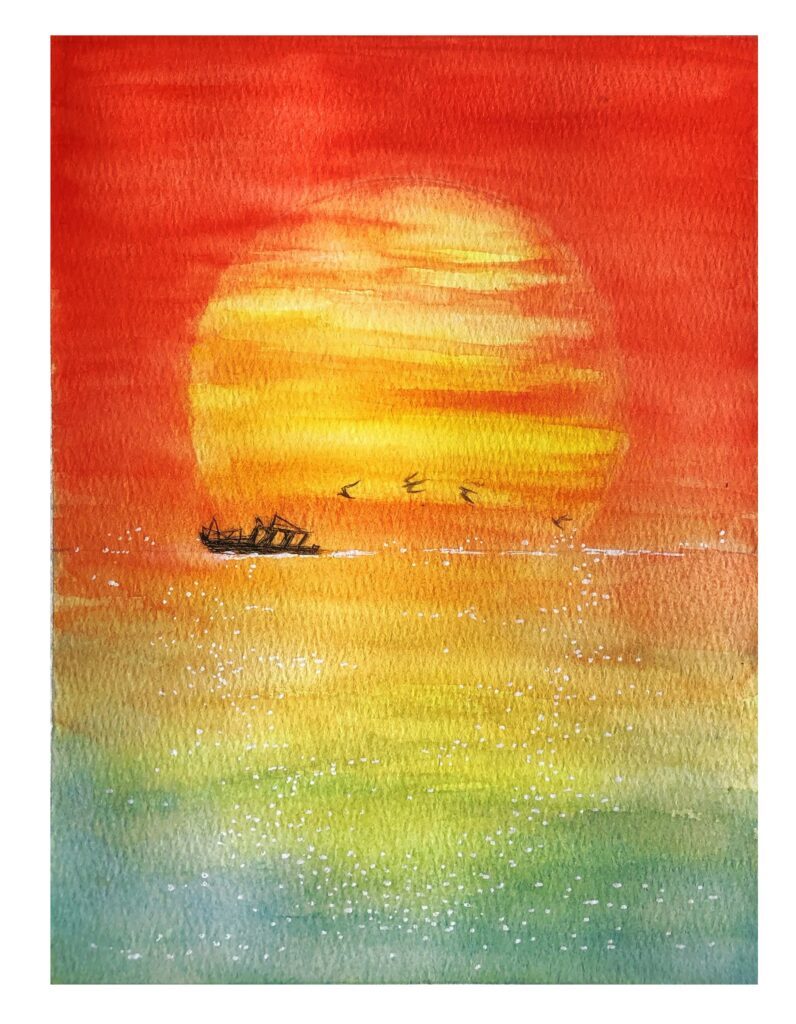
- Look to Nature for Inspiration: Nature is a treasure trove of painting ideas. Take a walk in the park, hike through the woods, or simply sit in your garden. Observe the vibrant colours of a sunset, the intricate patterns on a leaf, or the way light dances through the trees. These natural elements can spark endless painting ideas.
- Explore Different Cultures and Art Styles: Dive into the rich tapestry of global art. Research different cultures and their unique art styles, from the bold strokes of Impressionism to the expressive forms of Abstract Expressionism. You might find a style or technique that resonates with you and inspires your next masterpiece.
- Use Personal Experiences and Emotions: Your own life is a powerful source of inspiration. Reflect on your experiences, emotions, and memories. Whether it’s the joy of a family gathering or the tranquillity of a solo walk, channel these feelings into your art to create something deeply personal and meaningful.
- Experiment with Different Materials and Techniques: Don’t be afraid to mix things up! Try out different materials like watercolours, acrylics, or mixed media. Experiment with various techniques to see what works best for you. Sometimes, a new medium or method can open up a whole new world of creative possibilities.
- Incorporate Visual Elements: Use an image to create a focal point or enhance your design. Whether it’s a painted canvas headboard or framing a piece of artwork with paint, impactful visual statements can elevate your space.
Colour Palette Mastery
Choosing the right colour palette can make or break your painting. I’ve learned (sometimes the hard way!) that starting with a limited palette actually helps develop better colour confidence. Additionally, using limewash paint can provide a natural finish with its unique chalky texture, adding depth and aesthetic appeal to your room. Try these combinations:
- Earth tones: Browns, greens, and warm yellows
- Ocean vibes: Blues, teals, and whites
- Sunset magic: Oranges, purples, and pinks
Incorporating an image, such as a painted canvas headboard or framed artwork, can create an impactful visual statement in your space.
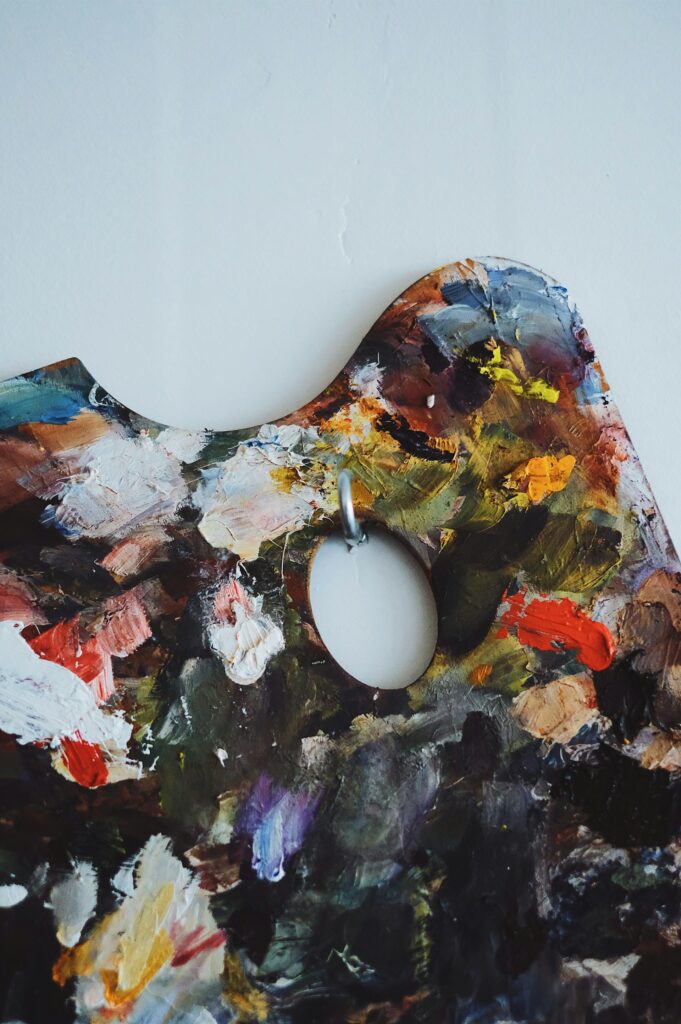
Nature as Your Muse
When you’re searching for ideas for painting, there’s nothing quite like stepping into the woods for inspiration! The textures, colours, and patterns you’ll find in nature are impossible to beat. I love taking my sketchbook to local parks – the way light plays through trees creates the most amazing effects!
Easy Painting Ideas for Beginners
- Simple Landscapes and Still Life
- Start with a basic horizon line to develop your landscape painting idea
- Add simple shapes for trees
- Play with different greens for depth
- Abstract Patterns
- Use geometric shapes
- Experiment with texture
- Focus on colour relationships
Simple Landscapes and Still Life
Starting with simple landscapes and still life paintings is a fantastic way to build your skills and confidence. Here are some tips to get you going:
- Start with a Simple Composition: Use a limited color palette and focus on basic shapes and forms. This will help you understand the fundamentals without feeling overwhelmed.
- Use Reference Images: Find inspiration in nature or set up a still life arrangement at home. Reference images can guide your composition and help you capture details accurately.
- Practice, Practice, Practice: Don’t be discouraged if your first attempts don’t turn out as expected. Every stroke is a step towards improvement. Keep practicing, and you’ll see progress over time.
Remember, the journey is just as important as the destination. Enjoy the process and watch your skills blossom!
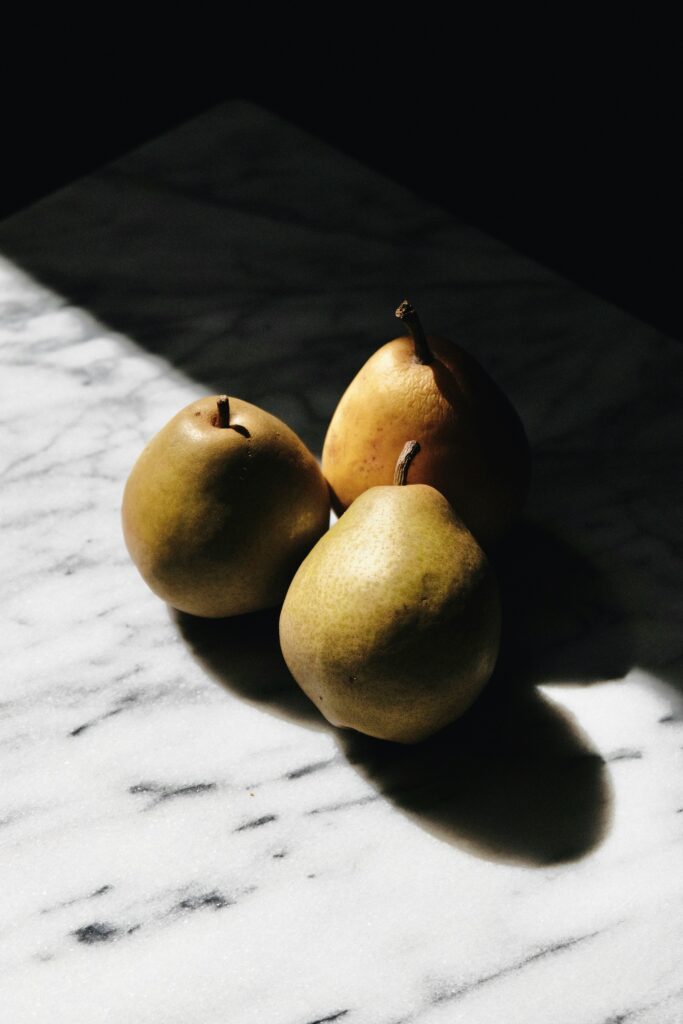
Self Portrait Adventures
Don’t worry – your self portrait doesn’t have to look exactly like you! It’s about capturing essence and feeling, and understanding the difference in emotional themes conveyed through color. I always tell my students to focus on one feature they love about their face and emphasise that.
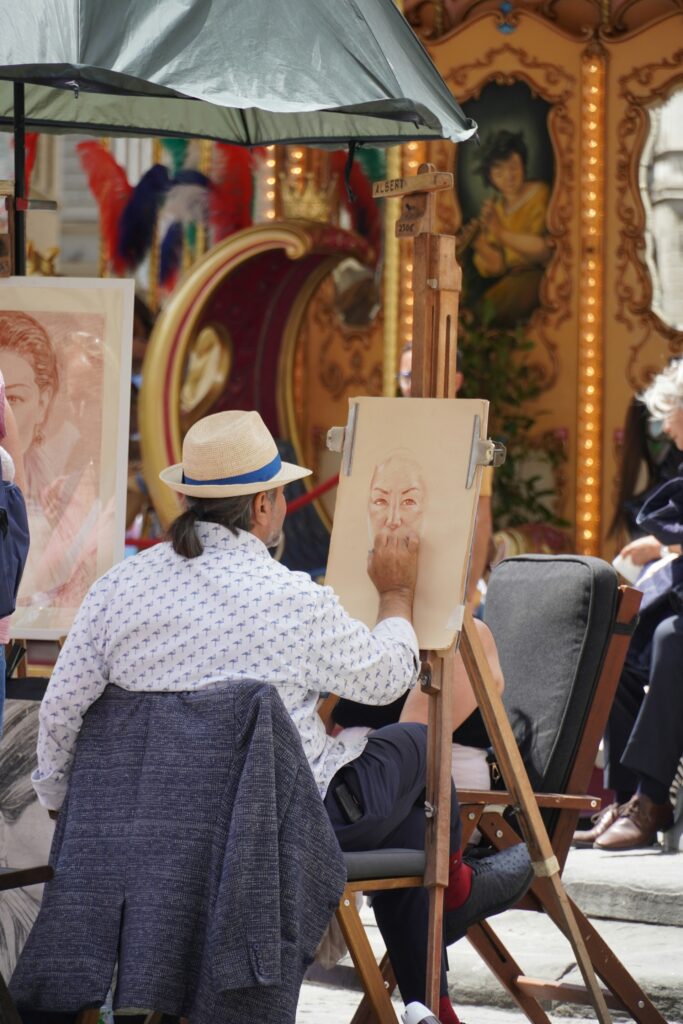
Creating Atmosphere Through Light and Dark
Understanding light can transform your painting from good to extraordinary. Here’s what I’ve learned through lots of trial and error:
- Dark areas create depth
- Light spots draw attention
- Contrast creates drama
Using an image to create a focal point can also make an impactful visual statement in your design.
Acrylic Techniques Worth Trying
Speaking of techniques, here’s a fantastic brush set I use: Arteza Professional Acrylic Brush Set (£18.99 on Amazon UK). Perfect for these methods:
- Dry brushing
- Impasto
- Glazing
Learn Different Brushstrokes and Textures
Mastering different brushstrokes and textures can add incredible depth and interest to your paintings. Here are some techniques to try:
- Flat Brushstrokes: Use a flat brush to create smooth, even surfaces. Perfect for backgrounds and large areas.
- Round Brushstrokes: A round brush is great for creating soft, curved lines and details. Ideal for adding intricate elements to your painting.
- Filbert Brushstrokes: The filbert brush, with its rounded edges, is perfect for blending and creating textured effects. It’s a versatile tool for any artist.
- Drybrushing: Use an almost-dry brush to create rough, textured effects. This technique is fantastic for adding highlights and details.
- Glazing: Apply multiple layers of transparent paint to achieve deep, rich colors. Glazing can add a luminous quality to your work.
Experiment with these techniques to discover what works best for you. Each brushstroke is a new adventure!
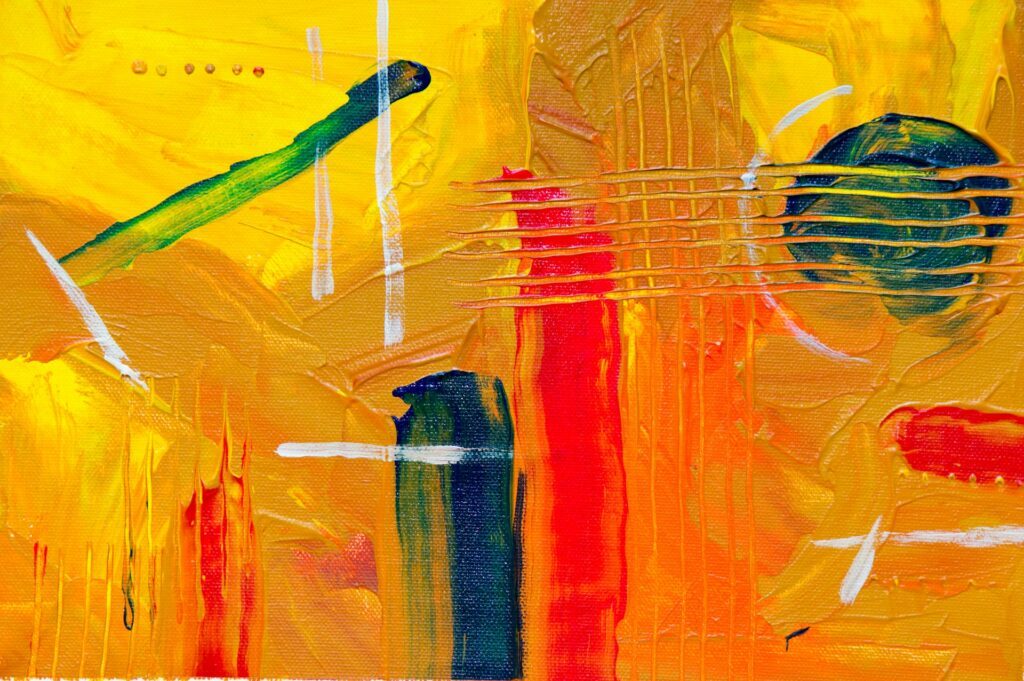
Use Layering and Glazing for Depth
Layering and glazing are powerful techniques that can add depth and dimension to your paintings. Here’s how to use them:
- Layering: Build up colors and textures by applying multiple layers of paint. Start with a base layer and gradually add details and highlights. This technique can create a rich, complex surface.
- Glazing: Apply thin, transparent layers of paint over a dry layer to achieve deep, rich colors. Glazing can create a luminous, glowing effect that adds depth to your work.
- Scumbling: Apply a thin layer of opaque paint over a previously painted surface to create a textured, rough effect. This technique can add interest and complexity to your painting.
By experimenting with layering and glazing, you’ll be able to create stunning artworks that showcase your unique style and vision. Dive in and explore the endless possibilities!
With these new sections, your ultimate guide to finding painting inspiration is now even more comprehensive and engaging. Happy painting! 🎨
Finding Inspiration in Everyday Life
Sometimes the best painting ideas come from the most mundane places:
- That old chair in your bedroom
- The way light hits your coffee cup
- Your family pet in their favourite spot
Photography as a Starting Point
Using a photo for reference isn’t cheating – it’s smart! I often search Google for reference images or take my own photos to capture that perfect moment of inspiration.
Modern Approaches to Traditional Subjects
Mix things up! Highlight the difference between traditional and modern techniques by painting traditional subjects with a modern twist:
- Abstract trees
- Geometric animals
- Minimalist landscapes
Developing Technical Skills
Remember that Royal & Langnickel Canvas (£15.99 on Amazon UK)? It’s perfect for practicing these essential skills:
- Brush strokes
- Blending
- Texture creation
Creating Space and Depth
Understanding how to create space in your painting can really level up your work:
- Use aerial perspective
- Play with scale
- Manipulate value contrasts
Incorporating a striking image, such as a painted canvas headboard or framed artwork, can also make an impactful visual statement in your design.
The Joy of Experimental Techniques
Don’t be afraid to break the rules! Some fun techniques to try:
- Paint throwing
- Texture paste (I recommend Liquitex Modelling Paste – £9.99 on Amazon UK)
- Mixed media with embroidery
Building Creativity and Imagination
Building creativity and imagination is like exercising a muscle – the more you use it, the stronger it gets! Here are some tips to help you cultivate your creative side:
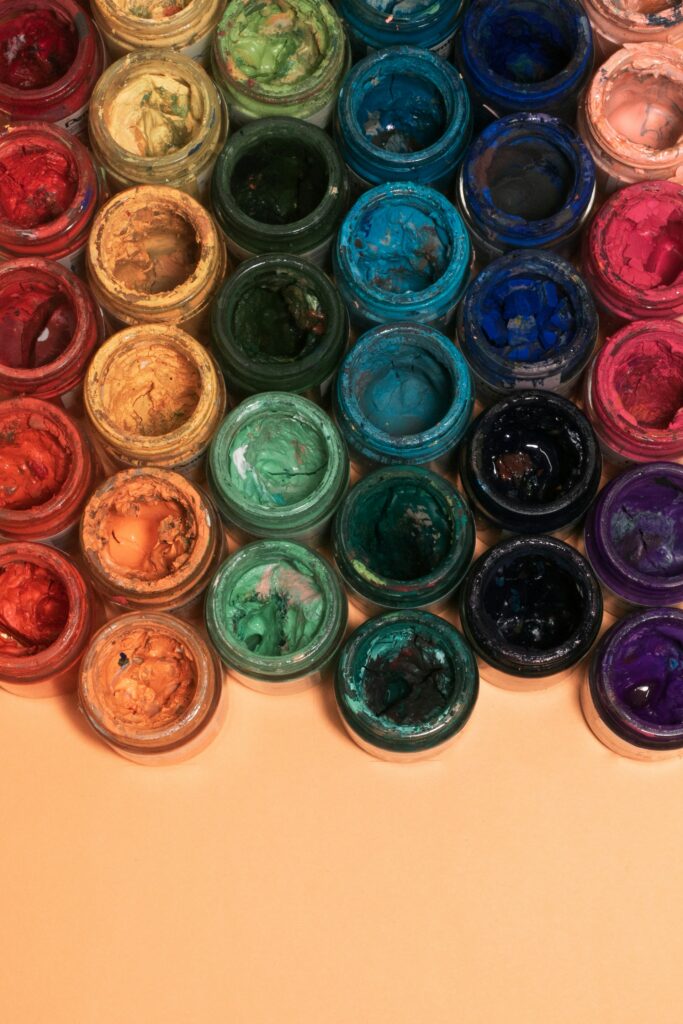
- Practice Regularly: Set aside dedicated time each day or week to paint and experiment. Consistent practice not only improves your skills but also keeps your creative mind active and engaged.
- Take Risks and Try New Things: Step out of your comfort zone and try new techniques or materials. Even if things don’t go as planned, you’ll learn valuable lessons and might discover something amazing along the way.
- Seek Out New Experiences and Inspiration: Broaden your horizons by traveling, reading books, or exploring different cultures. New experiences can provide fresh perspectives and ideas for your art.
- Collaborate with Others: Working with other artists or creatives can be incredibly inspiring. Collaborations can introduce you to new techniques, ideas, and ways of thinking that can fuel your imagination.
Overcoming Creative Blocks and Challenges
Every artist hits a creative block now and then – it’s part of the journey! The difference in approaches to overcoming these hurdles can be significant. Here are some tips to help you overcome those hurdles:
- Take a Break: Sometimes, the best way to overcome a block is to step away from your project. Take a walk, do something you enjoy, and come back to your painting with fresh eyes and a clear mind.
- Seek Out Feedback and Support: Don’t hesitate to reach out to fellow artists or mentors for feedback and advice. They can offer new perspectives and solutions you might not have considered.
- Try a New Approach: If you’re feeling stuck, shake things up! Approach your project from a different angle or try a new technique. A change in perspective can often reignite your creativity.
- Practice Self-Care: Your physical and mental well-being are crucial for maintaining creativity. Make sure to take care of yourself by getting enough rest, eating well, and managing stress.
Finding Your Creative Voice
Your unique perspective is what makes your art special. Start with a creative painting idea to develop your concepts. Draw from:
- Personal experiences
- Cultural background
- Emotional responses
Building Confidence Through Practice
Remember: every master was once a beginner. Start with simple projects and gradually challenge yourself.
Displaying and Sharing Your Art
Once you’ve created a piece of art, it’s time to share it with the world! Here are some tips for displaying and sharing your art:
- Create a Portfolio: Gather your best work and create a portfolio that showcases your skills and style. A well-organized portfolio is essential for presenting your art to potential clients or galleries.
- Share Your Art Online: Use social media and online platforms to share your art with a wider audience. Platforms like Instagram, Behance, and Pinterest are great for showcasing your work and connecting with other artists and art lovers.
- Enter Art Competitions: Participating in art competitions can help you gain recognition and exposure. Look for local, national, or even international competitions to enter your work.
- Display Your Art in Local Galleries or Exhibitions: Look for opportunities to display your art in local galleries or exhibitions. This not only gets your work seen by a wider audience but also allows you to connect with other artists and art enthusiasts. An impactful image can create a strong visual statement, enhancing the overall presentation of your work.
Paint & Listen: Top Audible UK Books to Fuel Your Creativity 🎧
Here’s a game-changer for your painting sessions – listening to amazing art books while you create! I’ve discovered that having an audiobook playing in the background not only makes painting more enjoyable but can actually improve your technique. Here are my top picks from Audible UK that’ll transform your painting sessions:

For Technique & Inspiration
- Paint & Listen: Top Audible UK Books to Fuel Your Creativity 🎧Here’s a game-changer for your painting sessions – listening to amazing art books while you create! I’ve discovered that having an audiobook playing in the background not only makes painting more enjoyable but can actually improve your technique. Here are my top picks from Audible UK that’ll transform your painting sessions:For Technique & Inspiration
- “Colour and Light: A Guide for the Realist Painter” by James Gurney (£18.99)
- Perfect for understanding how light affects everything you paintThe narration is super engaging, and you can practice techniques as you listen!I often replay the chapter about colour theory while working on landscapes
- “Big Magic: Creative Living Beyond Fear” by Elizabeth Gilbert (£16.99)
- Not strictly about painting, but WOW – this book transformed how I approach my canvasListen to this when you’re feeling stuck or afraid to experimentThe author’s voice is so soothing – perfect for those detailed painting sessions
- “The Story of Art” by E.H. Gombrich (£24.99)
- Like having a brilliant art professor right in your studioGreat for understanding different painting styles through historyI love painting while listening to the chapters about my favourite art periods
- “Daily Painting: Paint Small and Often To Become a More Creative, Productive, and Successful Artist” by Carol Marine (£14.99)
- Fantastic for developing a consistent painting practice. The exercises mentioned are easy to follow while listening My go-to audiobook when I need a creativity boost
- Perfect for understanding how light affects everything you paint
- The narration is super engaging, and you can practice techniques as you listen!
- I often replay the chapter about colour theory while working on landscapes
- “Colour and Light: A Guide for the Realist Painter” by James Gurney (£18.99)
Conclusion
The journey of finding ideas for painting is ongoing – that’s what makes it exciting! Remember, there’s no “perfect” in art, only perfect for you. Keep experimenting, stay curious, and most importantly, enjoy the process!
Frequently Asked Questions
Q: What paint should I start with as a beginner? A: I recommend starting with acrylics – they’re forgiving and dry quickly. The Winsor & Newton Galeria set mentioned earlier is excellent for beginners.
Q: How do I know what to paint? A: Start with subjects that excite you! If you love nature, begin with landscapes. If you’re drawn to people, try portraits.
Q: Do I need expensive materials to start painting? A: Not at all! While quality materials can help, starting with basic student-grade supplies is perfectly fine.
Q: How do I develop my own style? A: Style develops naturally through practice and experimentation. Don’t force it – let it evolve as you paint more.
Q: What if I make mistakes? A: Mistakes are opportunities for creativity! Some of my best works started as “mistakes.”
Q: How often should I paint to improve? A: Consistency is key. Even 15 minutes daily is better than several hours once a month.
Remember, every stroke brings you closer to finding your artistic voice. Now, grab those brushes and start creating! The canvas is waiting for your unique vision.



